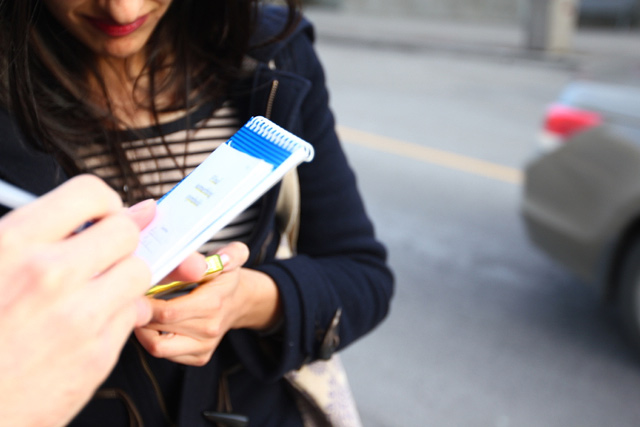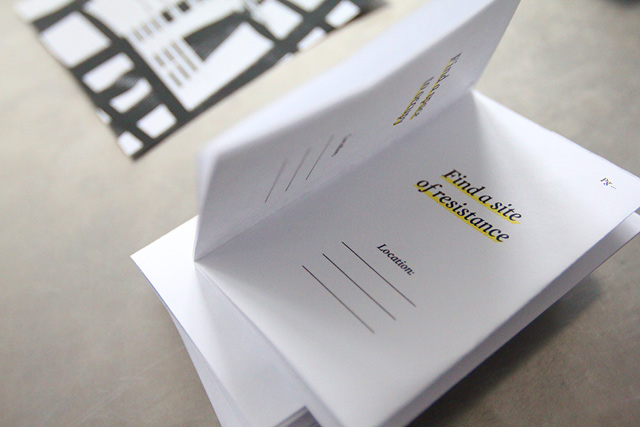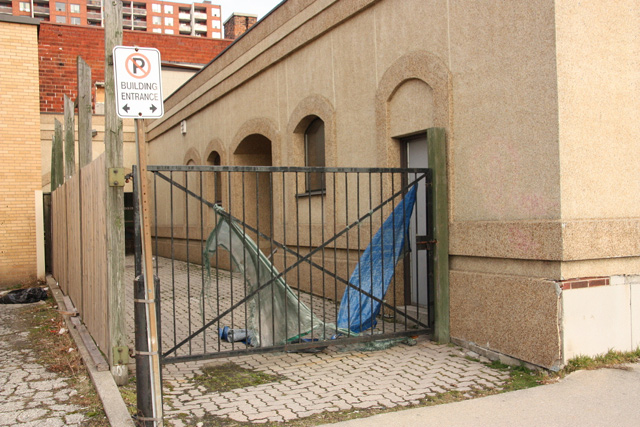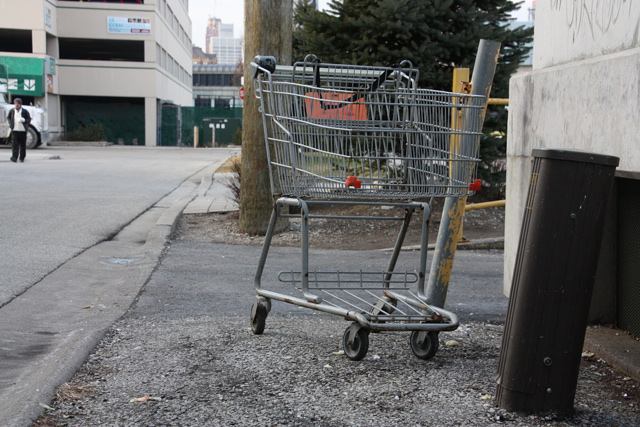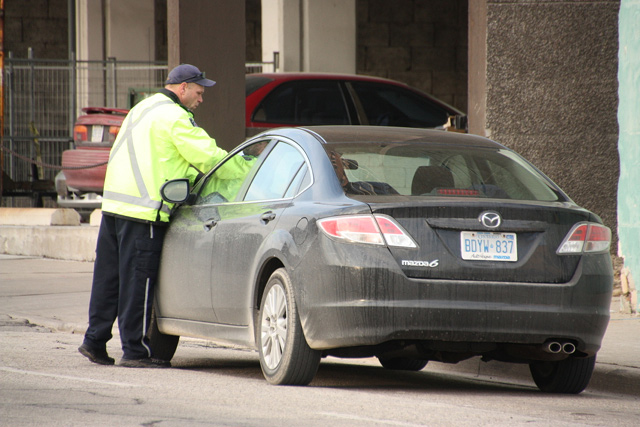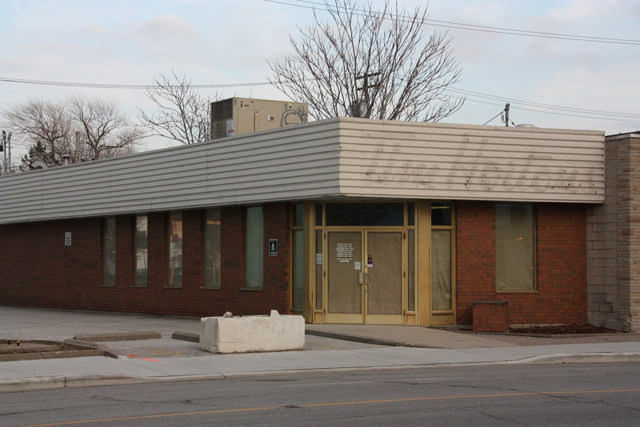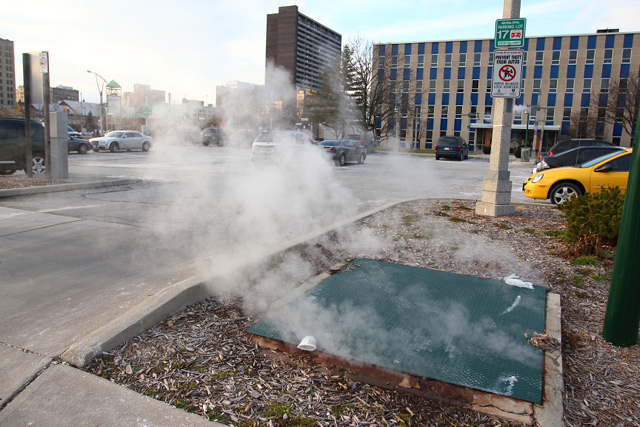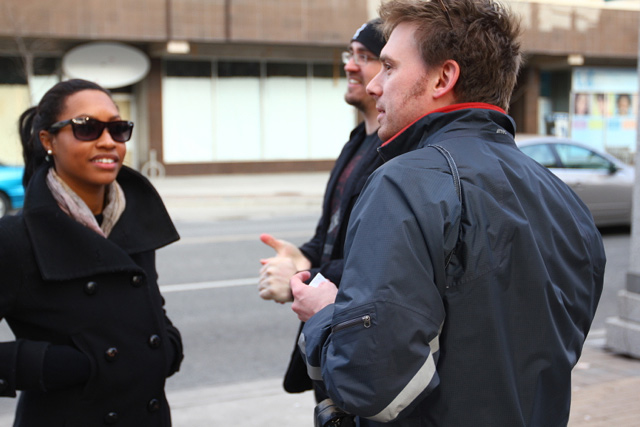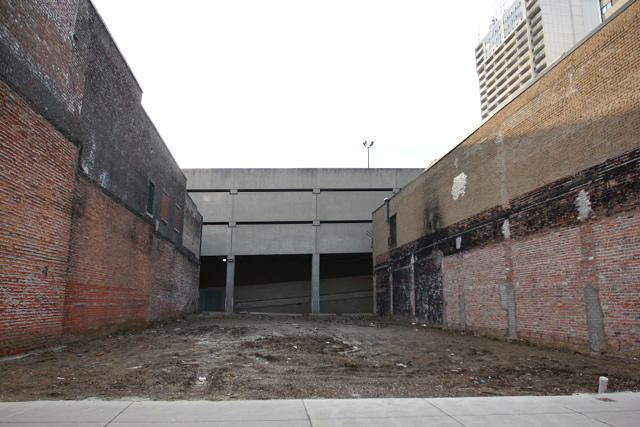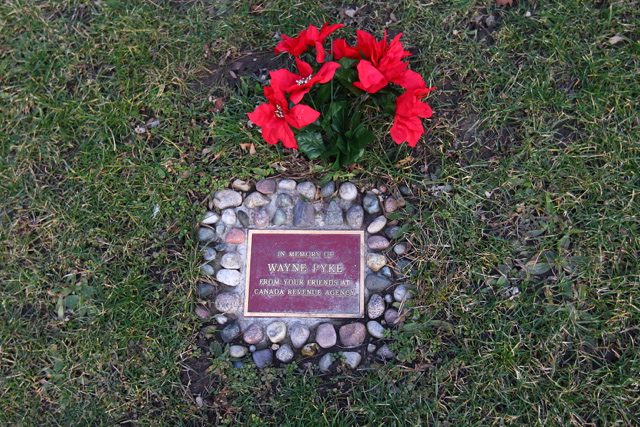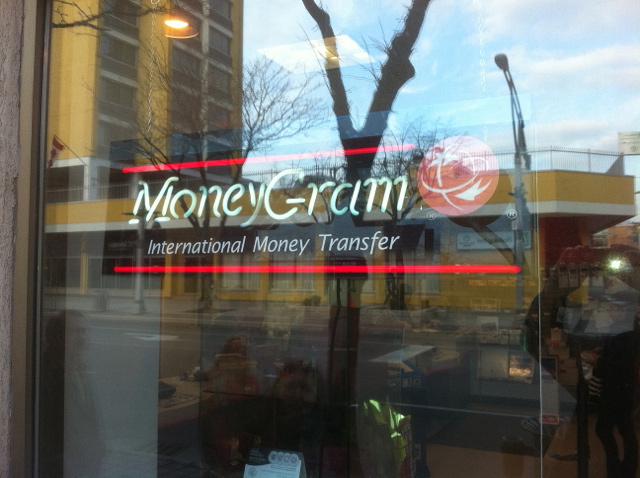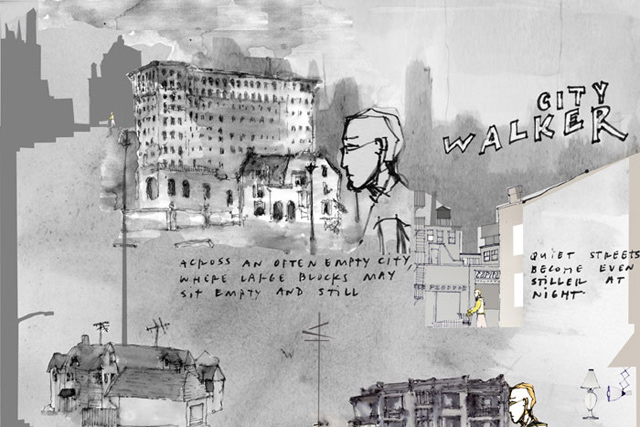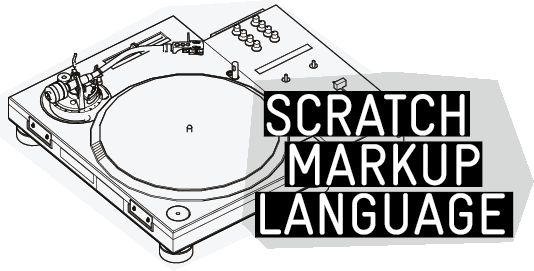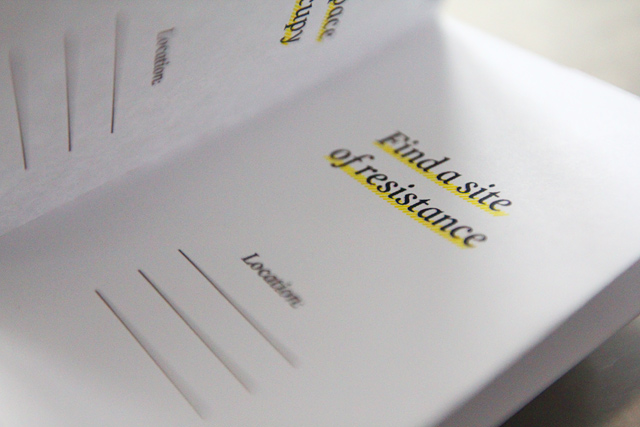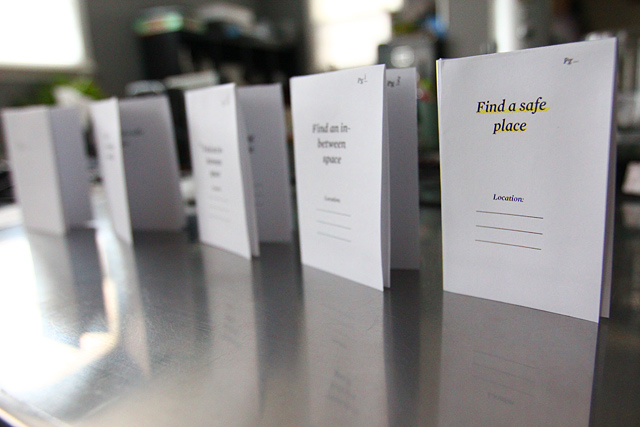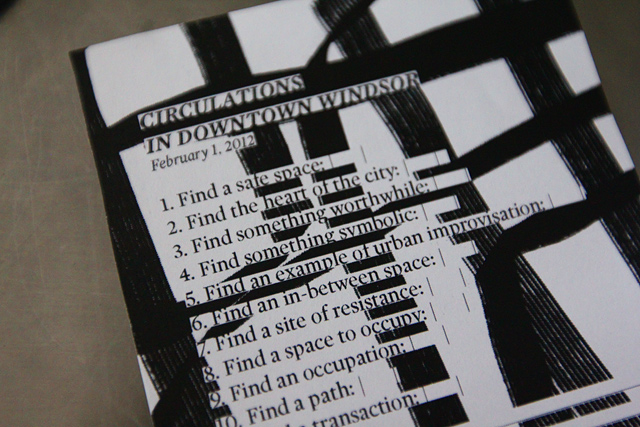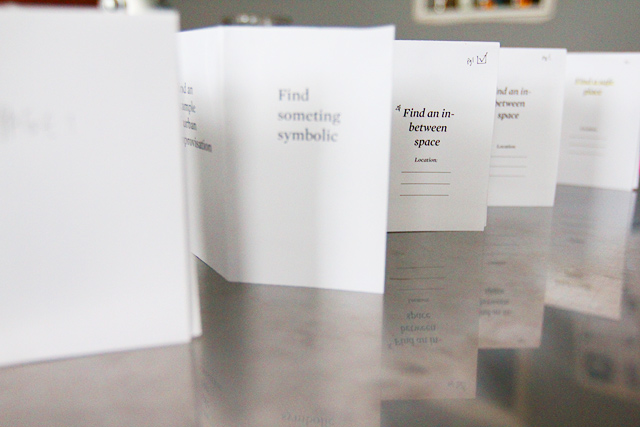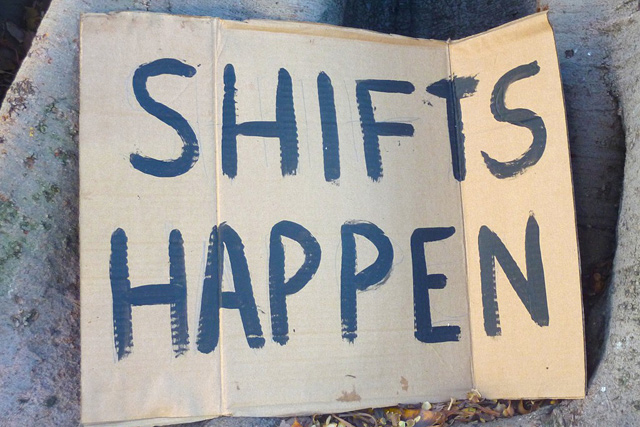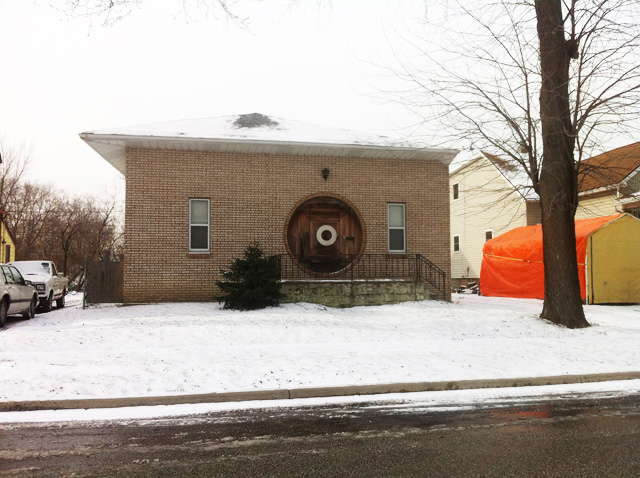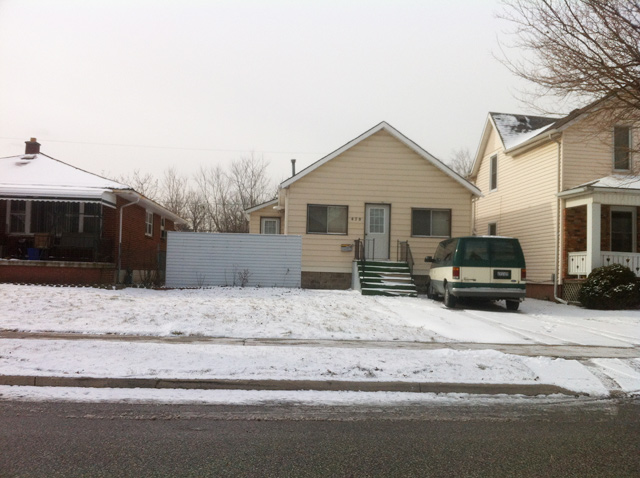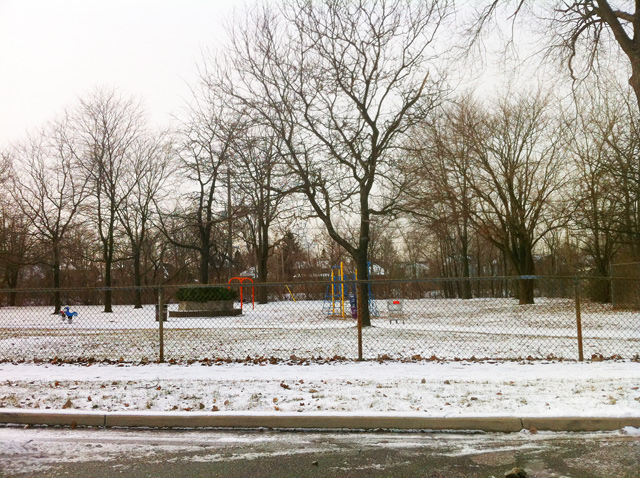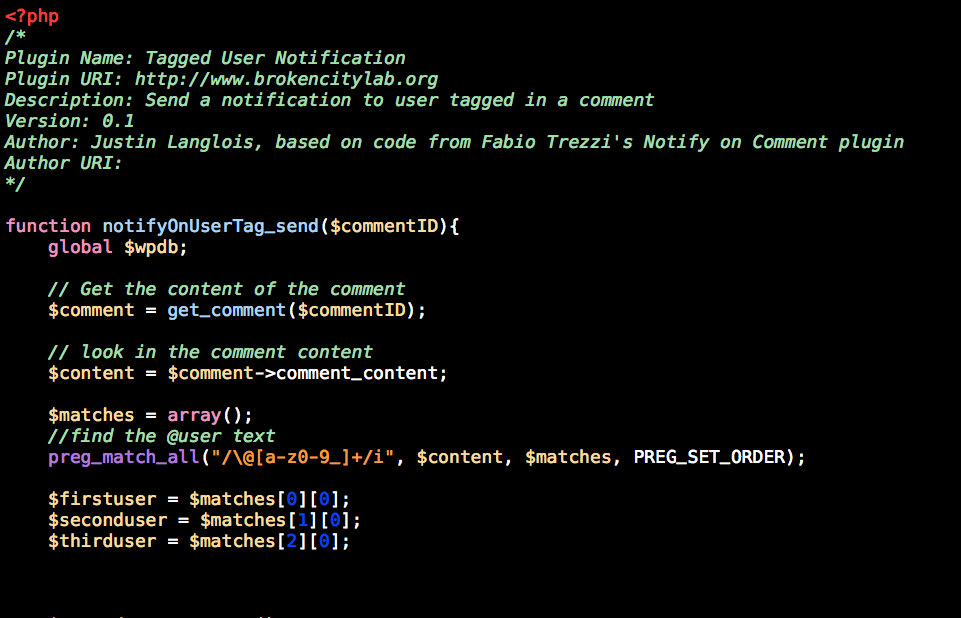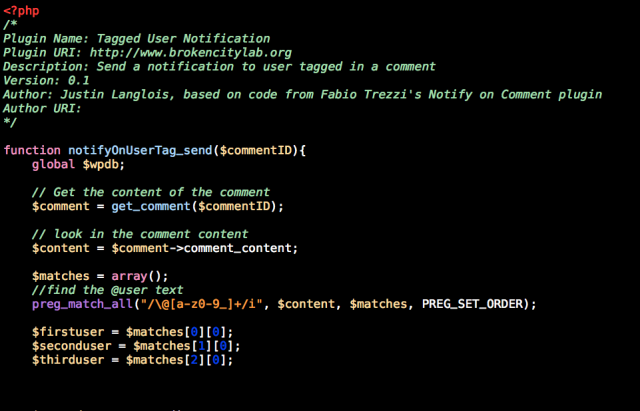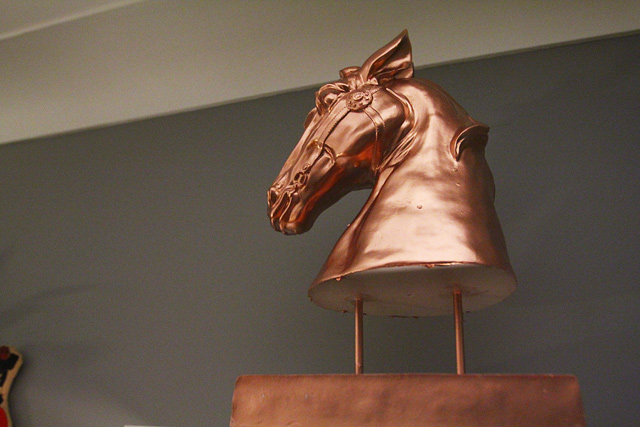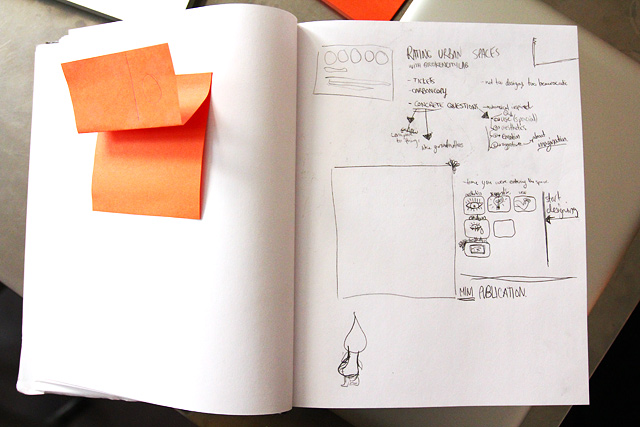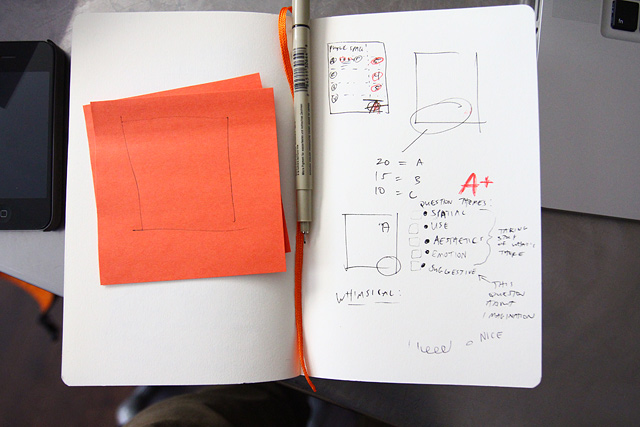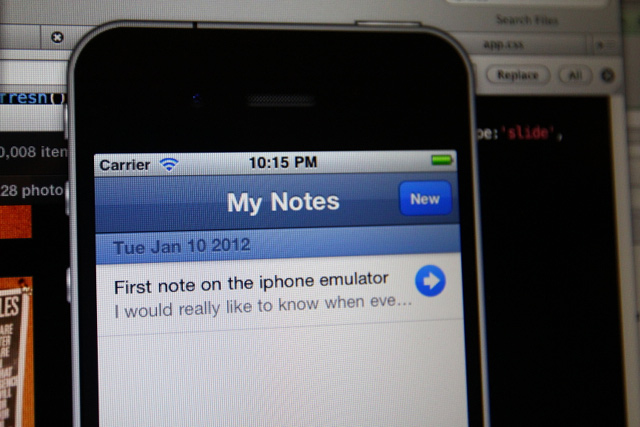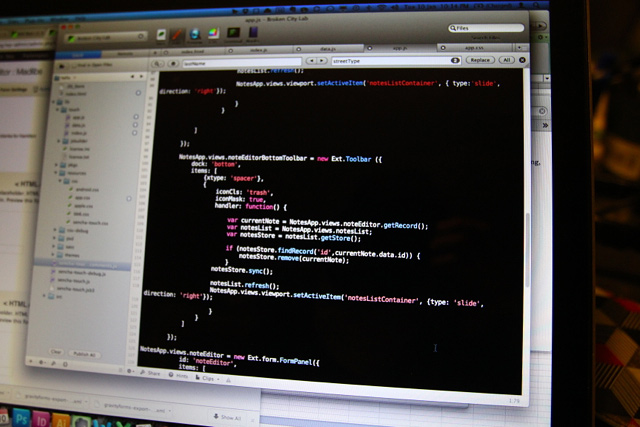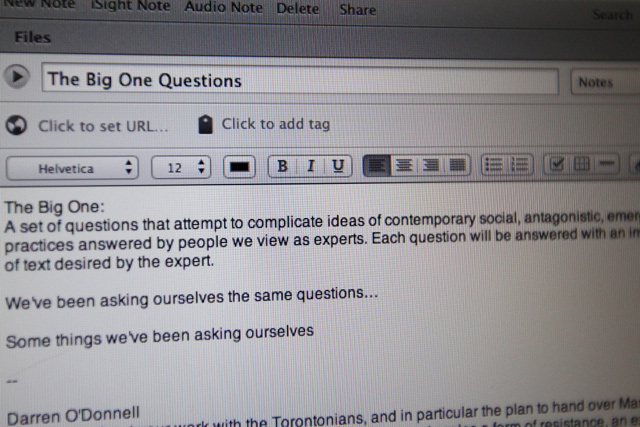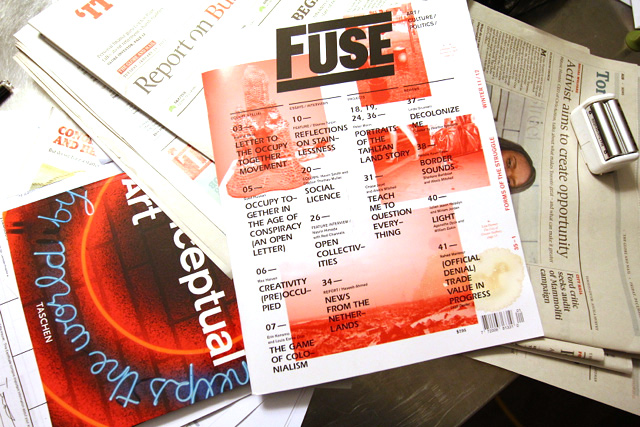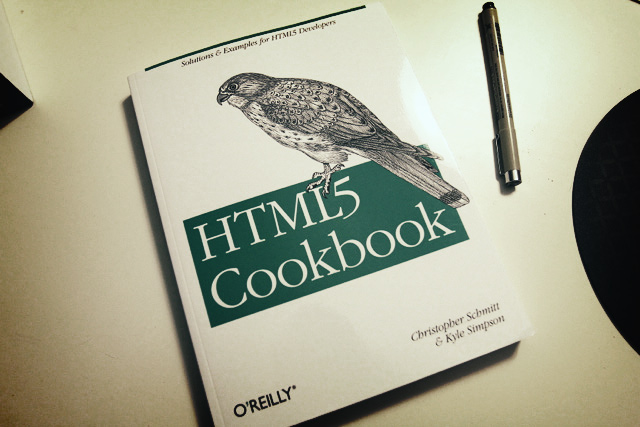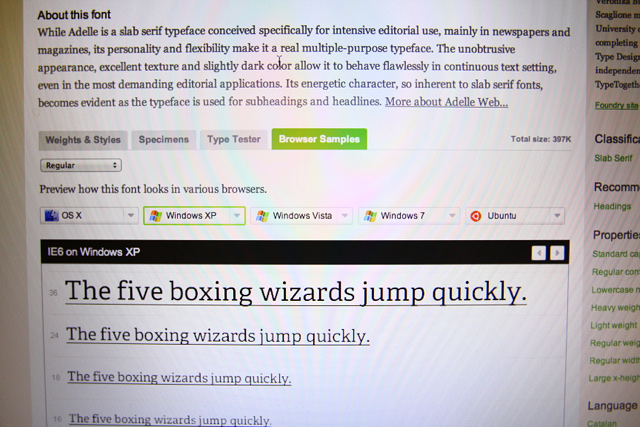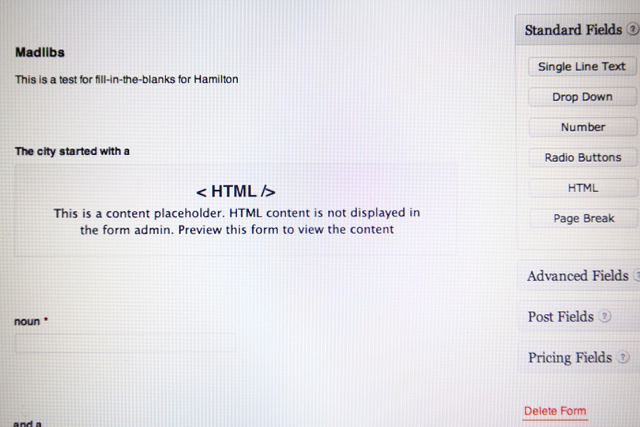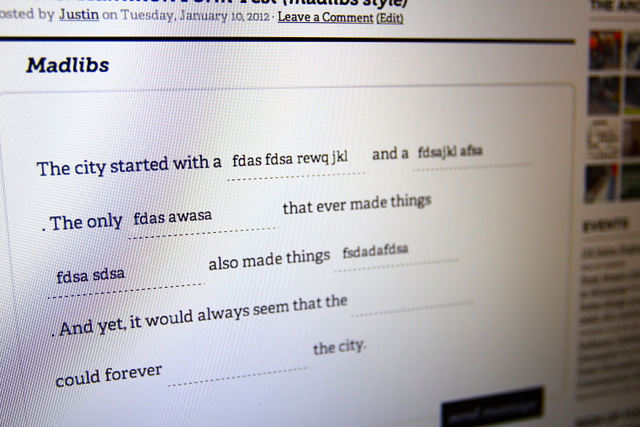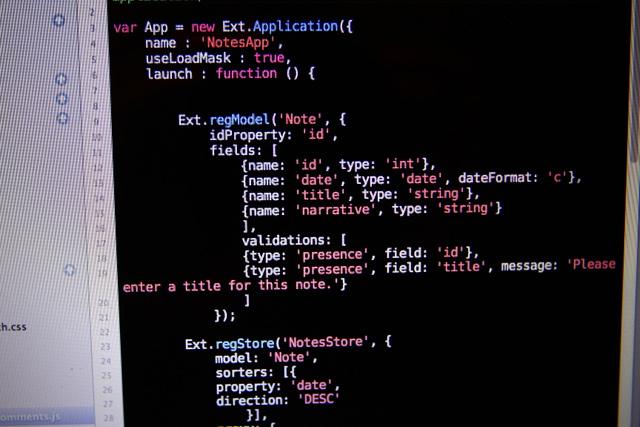Last Wednesday I hosted an algorithmic walk around downtown Windsor with some University of Windsor Communications Studies and History grad students. The class, led by Drs. Mike Darroch and Rob Nelson, spent about an hour exploring the city, as per the algorithm, in an area between Park and Pelissier and McDougall and Tuscarora. Groups of three spread out throughout the area and stepped through the algorithm in a different order.
The algorithm connected with some readings the class had done on ideas of circulation. It was based on a series of simple suggestions to look for things that disrupt, capitalize, or imagine forms of circulation in the city. At each step in the algorithm, groups had to take a photograph. Below are some images from the walk.
Find an in-between space.
Find an example of urban improvisation.
Find a transaction.
Find a space to occupy.
Find something symbolic.
Dr. Darroch and some of this students on the walk.
Find an in-between space.
Find something symbolic.
Find an example of urban improvisation.
Find a transaction.
Find a safe place.
Find the heart of the city.
I think this little 8-page booklet format could work well for our upcoming walks. I know we had talked about theming these walks. Any ideas for the first one on the 13th?
